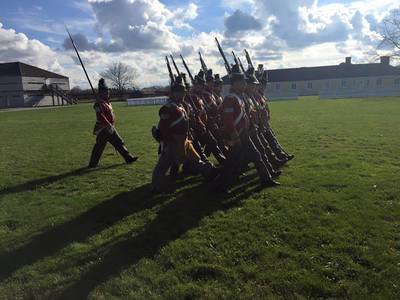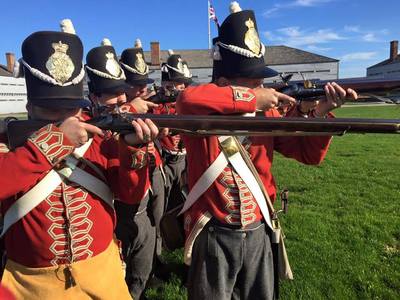Event Details ** ALL UP REQUIRED ** 2Location:
Fort George National Historic Site 51 Queens Parade Niagara-on-the-Lake, ON, L0S 1J0 Canada Date: July 15-16, 2023 Time: Sat 9:00am - 5:00pm Sun 9:00am - 4:00pm |
About the Battle
The Battle of Queenston Heights was the first major battle in the War of 1812. Resulting in a British victory, it took place on 13 October 1812 near Queenston, Upper Canada (now Ontario).
The battle was fought between United States regulars with New York militia forces, led by Major General Stephen Van Rensselaer, and British regulars, York and Lincoln militia and Mohawk warriors, led by Major General Isaac Brock and then Major General Roger Hale Sheaffe, who took command after Brock was killed.
The battle was fought as the result of an American attempt to establish a foothold on the Canadian side of the Niagara River before campaigning ended with the onset of winter. The decisive battle was the culmination of a poorly-managed American offensive and may be most historically significant for the loss of the British commander.
Despite their numerical advantage and the wide dispersal of British forces defending against their invasion attempt, the Americans, who were stationed in Lewiston, New York, were unable to get the bulk of their invasion force across the Niagara River because of the work of British artillery and the reluctance on the part of the undertrained and inexperienced American militia. As a result, British reinforcements arrived, defeated the unsupported American forces, and forced them to surrender.
The battle was fought between United States regulars with New York militia forces, led by Major General Stephen Van Rensselaer, and British regulars, York and Lincoln militia and Mohawk warriors, led by Major General Isaac Brock and then Major General Roger Hale Sheaffe, who took command after Brock was killed.
The battle was fought as the result of an American attempt to establish a foothold on the Canadian side of the Niagara River before campaigning ended with the onset of winter. The decisive battle was the culmination of a poorly-managed American offensive and may be most historically significant for the loss of the British commander.
Despite their numerical advantage and the wide dispersal of British forces defending against their invasion attempt, the Americans, who were stationed in Lewiston, New York, were unable to get the bulk of their invasion force across the Niagara River because of the work of British artillery and the reluctance on the part of the undertrained and inexperienced American militia. As a result, British reinforcements arrived, defeated the unsupported American forces, and forced them to surrender.
Photos from previous event:
|
|

